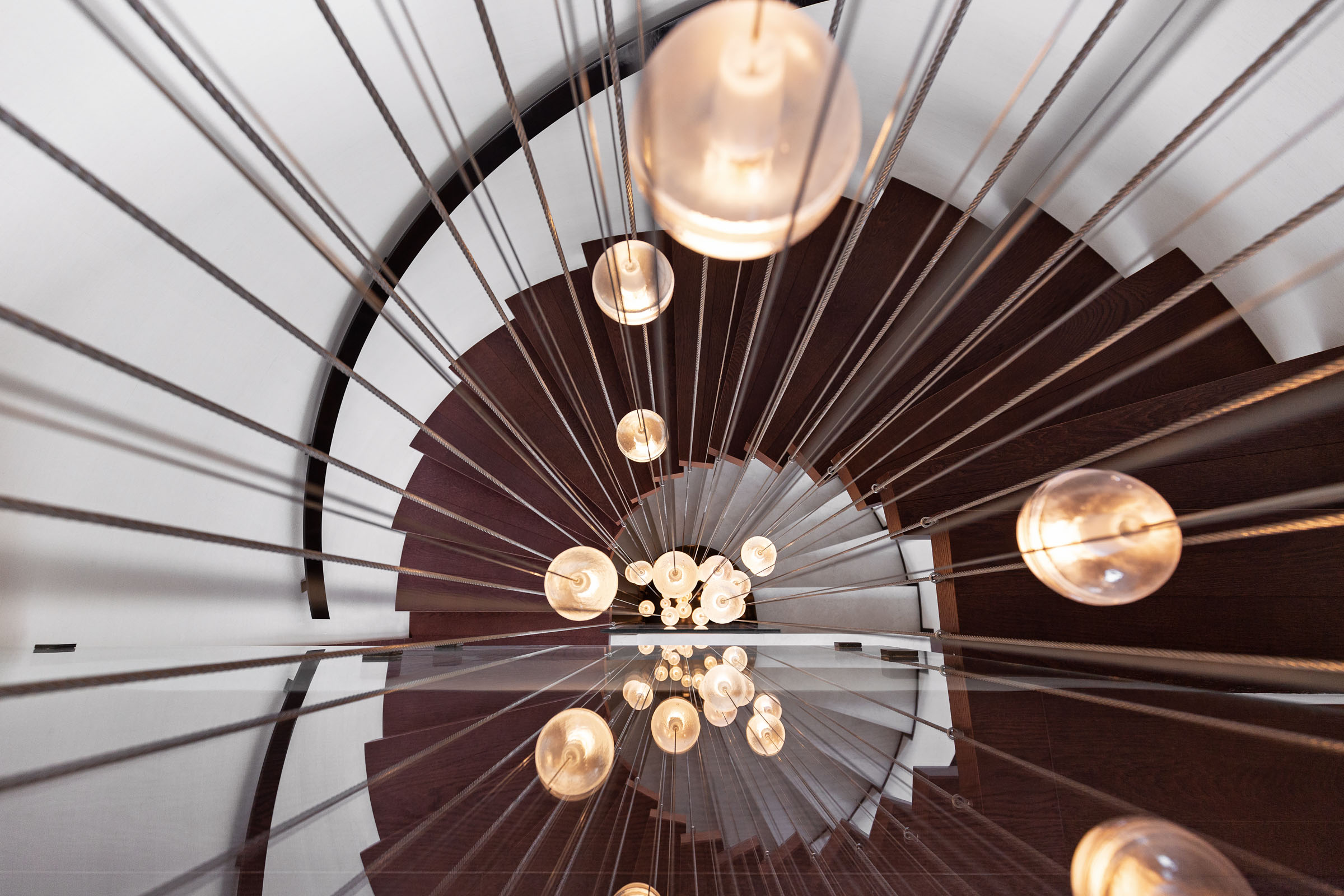Do you know which are the most resistant floors for a kitchen?
The floors of the kitchen are very suffered. They have to withstand the impact of falling utensils, the weight of people cooking, dripping water, oil and grease, etc. All this means that not all floors are equally recommendable to place in the kitchen.
In Coblonal Interior Design Studio we have worked on different projects and we have the necessary experience to advise the kitchen floors with the most suitable materials to install.
The most suitable materials for use in kitchen are resistant to shock and falls, waterproof and stain resistant, and heat resistant, mainly.
Discover, then, what types of kitchen floor are more resistant.

Interior design and production of the Azul Acocsa Kitchens Showroom
The most resistant floors for a kitchen
Porcelain tile or natural stone kitchen floors
Porcelain tiles continue to be the most common option, due to their ease of cleaning and durability, and their increasing resistance. In spite of this, with the fall of cooking utensils to the ground -made nothing exceptional- they can be damaged easily. We will have to invest in tiles of sufficient hardness and quality.
For its part, the natural stone floors are hard as a rock. In fact, this type of material is, precisely, a rock. The disadvantage that this stone presents, regardless of the price increase, is its porosity. A quality susceptible to the penetration of water and liquid stains. However, this can be solved by applying a sealant under the surface and thus creating an invisible layer of protection. Slate is one of the most used kitchen floor materials among natural stone, thanks to its strength and durability.
Microcement or concrete kitchen floors
Microcement has become an aesthetic and functional option that often minimizes the type of action to be performed, because if the base allows it, it can be applied directly on top of the existing tiles if they offer a level and stable base. You can also choose multiple colors that completely transform the whole. The disadvantage again is the resistance, because the thin layer of microcement despite being a smooth surface that greatly facilitates cleaning appears as a somewhat more fragile material against a great hustle and handling of objects susceptible to fall. Think of the glasses, plates, pots and utensils that pass through our hands, sometimes soapy.
The alternative is represented by concrete as one of the cheapest and most durable materials to place in a kitchen. The concrete on its side can not be applied with a layer as thin as microcement. It needs a greater thickness that in turn helps to ensure the strength and hardness of the material. It is a very suitable element for cooking with a certain industrial or casual air. Although with more limited options than microcement, the placement of polished and dyed concrete floors offer a continuous but high resistance surface.
Hardwood or bamboo kitchen floors
Although wood is not one of the most resistant materials to use on the floor of a kitchen, it can be a good option if it is treated with a quality finish based on polyurethane. However, over time the wood will be degraded by spills and splashes. We can always renew the polyurethane layer, with more or less transparency, revealing the aged appearance of the wooden floor.
An alternative to wood is bamboo, which is technically an herb. Its great hardness and greater resistance to humidity and the effects of water present it as a better option than traditional wood. Thanks to its hardness and flexibility, bamboo is known as vegetable steel. In addition, it is worth noting its flame retardant properties. Together, attributes that make it an interesting option to place on the floor of a kitchen.
Vinyl or linoleum kitchen floors
Vinyl is one of the most versatile and resistant kitchen floor solutions. It is a synthetic material and is practically impermeable to stains, damage and water problems. It is very easy to clean with a sweep, a scrub and a regular vacuum. Some vinyl manufacturers offer guarantees on this material for 20 years. However, although very resistant variants are appearing, as a rule, they do not last long and begin to wear out after about 7-10 years of active use in a kitchen.
For its part, linoleum is a material that was very popular in kitchens 50 years ago, and is returning to become fashionable today in its more resistant version known as “inlaid”. This material is made with solidified flax oil mixed with wood flour or cork powder placed on a support of a canvas or coarse cloth. Linoleum is eco-friendly, easy to clean and maintain. And it can last more than 40 years. The drawback is that it is a material that is not very resistant to flooding, although it tolerates perfectly the usual cleanliness and humidity in the kitchen.
In Coblonal, we try to anticipate the intended use of the kitchen in order to fine-tune the material chosen based on it and the possibilities and aesthetic convenience of the whole. Linoleum will surely seem like a good economic option for a rental apartment where the price and durability are the most important, but with little value for a high quality home.
Owning the needs and preferences of the client should make clear our uncertainties if we are looking for a high resistance floor for the kitchen.




